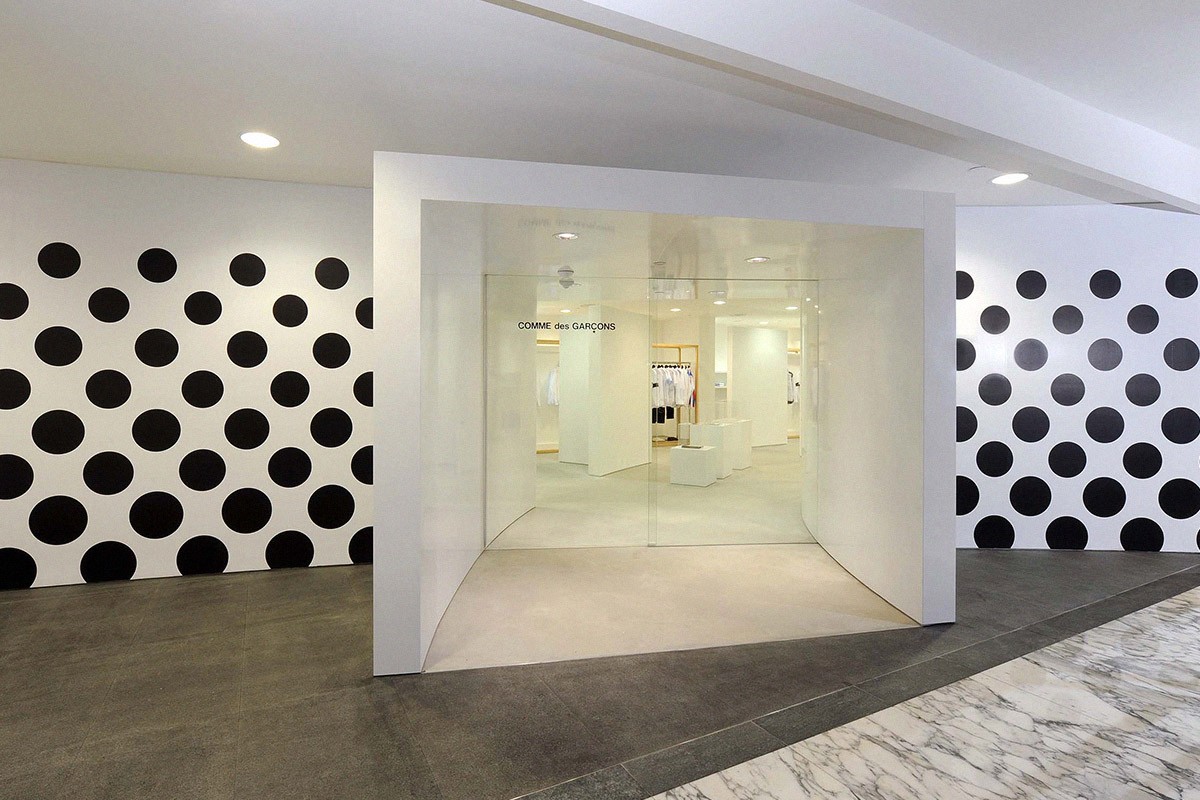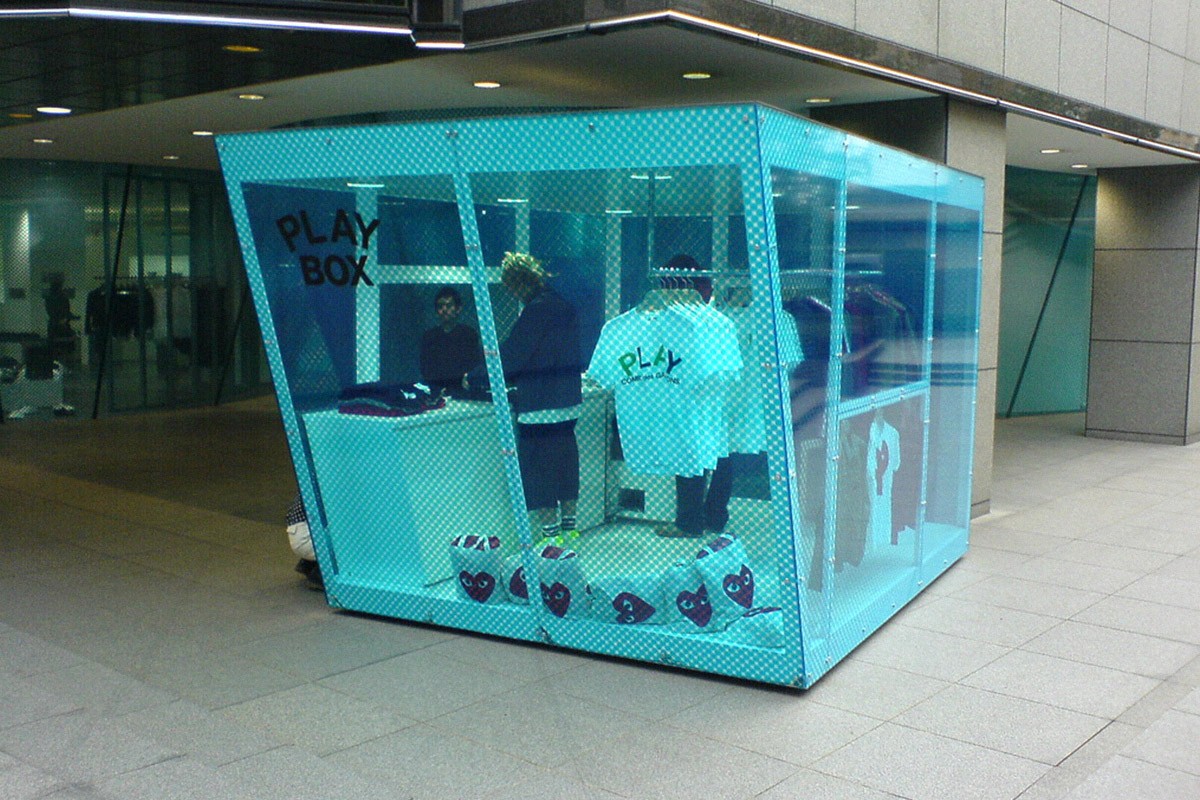A system that has been working out brilliantly ever since it was born almost 12 years ago, and that defines one of the go-to marketing strategies for retailers, are pop-up stores…

The hype got started by Comme Des Garçons, when the Japanese fashion brand, founded by Rei Kawakubo, opened its first Guerrilla store in Berlin. With minimal costs, and the advantage of being physically present in a yet-to-be-gentrified area, the brand created a massive hype, while solving storage problems by selling older stockings – a strategy that seems to be a no-brainer!
However, the rent for a physical store still implies a huge cost factor, as prime real estate is almost unaffordable. But fortunately, the fast-paced lifecycle of pop-up stores secures and easier management, as the labels are only in need for short-term-rents. Tech brands such as Appear Here or Storefront are companies that connect such retailers with landlords, making it possible for them to rent out space for even only a couple of days.
The problem with these companies is, however, that the prices are getting less transparent. We would think that prices should be lower and more transparent caused by all the information given by the internet, but in reality, prices are going up non-stop, which makes it almost unbearable for smaller labels to open pop-ups in the big cities.

Besides a variety of smaller independent brands, big luxury retailers, such as Burberry, have also discovered the huge benefits of pop-up stores. Although we would think that such brands don’t have any problems with getting rid of old stock, they are primarily interested in the strategy for communication reasons.
As pop-up stores are only available for a short term, customers are even more attracted and get encouraged to share the brand’s and the pop-up store’s exclusivity on their social media, giving value through likes, tags and shares! This communication benefit is often a big factor when it comes to the queue-effect. Pop-up stores and their hype engage consumers to line up in front of the stores, often at 5 am in the morning, to be the first ones grabbing the best sales items. And as queues are always generating even more attraction, and often grab the attention of the media as well, the communication value is meant to be the booming factor.
And there is another factor that makes pop-up stores so interesting when it comes to creativity. The stores are often used by brands to test new merchandising, visuals and innovations, because of lower restrictions. Art directors are able to work more creatively and freely, turning the store itself into and individual artwork.

An artwork that enables the brand to approach to local markets. With the easiness of setting up pop-up stores, Comme Des Garçons opened a huge number of them to reach out to various new locations, such as Singapore, Reykjavik or Beirut or Athens, which are surely not the epicenters of fashion, but enable the brand to reach out to new groups of consumers. Consumers, which build new communities around the brand and give it more cultural and international value.
These consumers are getting encouraged through the story-telling that brand’s use for their pop-up stores. Living in a world that is highly dominated by commercial brands, globalisation and mass production, customers are more likely to connect with a brand that tells them a story through individuality, quality and through interesting projects, such as the pop-up stores. They create the feel of exclusivity and interaction, giving the brand and its fashion a new, valuable meaning and recognition.
 Discover the entire story of Rei Kawakubo in Fashion Industry Broadcast’s Masters of Fashion Vol. 39 “Renegades”. Available via Amazon worldwide!
Discover the entire story of Rei Kawakubo in Fashion Industry Broadcast’s Masters of Fashion Vol. 39 “Renegades”. Available via Amazon worldwide!
…and watch our 5-minute web-doco about the work of Rei Kawakubo below!






